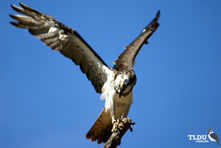
Shoppers Feedback:
Jan 17, 2017
Hello Ros,
I have now paid the invoice, but I would like to write to you just to say a big THANK YOU for getting me the Penguin!
The ChatterMate Penguin became a nice memory for me when I was in New Zealand, and I am so greatful to you for arranging so that I could have it! :-)
Thank you so much!!!!!!!!!!!
Regards,
Malin
Hi Ros,
Many thanks for your very kind email. I really appreciate your prompt reply!
I appreciate your advice regarding the decorations and customs. These are a gift for my daughter’s exchange student family so when she returns home on the weekend I will show her and see if she loves them as much as I do!
Thanks so very much again - I am truly grateful for your kind assistance.
Kind Regards
Bernadette
Ros,
Thanks again for the great customer service. It's a refreshing change!
Best regards,
Trevor
Hey Roz,
Thank you for your emails. Just loved my first order. The cute little Aussie bush critters are going to be used for an office Christmas decoration. My colleagues also liked them and talked about making an order to your site. I'll send you a photo when completed.
I'll be ordering more to send to my daughter's host family in America.
Fabulous service from you.
Kind regards,
Michelle
Thankyou. Order arrived today. One very happy grandson with his new beastly binoculars.
Regards,
Irene
- Home
- Wild Wonders
- Shop
- Aromas of Australia
- Australian Made
- Books
- Book Marks
- Christmas Decoration Sale
- Christmas Decorations
- Clocks
- Drink Holders
- Garden & Outdoor
- Gift Wrapping & Cards
- Home & Giftware
- Jewellery
- Keyrings
- New Products
- Pencils & Pen Holders
- Photo Frames
- Plush Toys
- Plush with Sound
- Sheepskin Rugs
- Stationery
- Stone Carvings
- Toys & Games
- Travel Goods
- Wedding
- Wild Figurines
- Wildlife Safety Products
- Wind Chimes
- Wine Charms
- View All Products
- Wildlife
- Australiana
- Explore
- Contact Us
Osprey

Quick Facts
| Length: | 60 cm |
| Height: | - |
| Weight: | 1.250 grams |
| Colour: | Dark brown upperparts with contrasting with pale underparts. |
| Habitat: | Coastal and Lake areas. |
| Food: | Fish |
| Predators: | - |
| Status: | Varies in Australia from rare in South Australia to secure across northern Australia. |
The Osprey is a medium-sized fish-eating bird of prey (raptor). It has dark brown upperparts contrasting with pale underparts. There is a black band through the eye, separating the white throat from the pale crown. The Osprey has a rather small head and neck and typically swivels its head around or sways its head from side to side. When it is perched, there is a short bristly crest. The eyes are placed well forward on the head. The fingered wings in flight are narrow and angled distinctively. There are dark patches on the underwing (at the bend in the wing). The beak is strongly hooked and the legs are powerful. The female is similar to the male but is larger and has a fuller, darker breast band. The Osprey is also called the Fish Hawk or White-headed Osprey.
The Osprey is cosmopolitan, being found in many coastal and lake areas of the world. In Australia, it is found on the north and east coast from Broome to the south coast of New South Wales. There is also a southern population from Kangaroo Island to the Great Australian Bight and a western population from Esperance to Cape Keraudren.
Ospreys are found on the coast and in terrestrial wetlands of tropical and temperate Australia and off-shore islands, occasionally ranging inland along rivers, though mainly in the north of the country.
Ospreys are sedentary, though they will range more freely in non-breeding periods. They are frequently faithful to a nest site, using the nest for many years. Young birds may disperse 20 km - 400 km.
The Osprey feeds mainly on medium-sized live fish, which it does not swallow whole, but rips apart to eat. The Osprey patrols the coast, searching for prey. It folds its wings, then drops headlong, with its feet forward to snatch a fish with its talons. It may go right under the water or snatch a fish from the surface, before lifting off again, with strong wing strokes.
The Osprey may use the same nest year after year. The nest is made from sticks and driftwood and may be huge after many years. It is usually placed on a cliff, a dead tree or even a radio mast. Both birds bring sticks, but the female usually places the sticks in the nest. The nest is lined with grass, seaweed or bark. The female does most of the incubation, while the male brings food to the nest.
Many young Ospreys become entangled in nets or seaweed and drown. Persecution, egg collection and hunting has threatened European populations. Removal of old trees and disturbance has disrupted nesting, but Ospreys readily use artificial nesting platforms. Their fish prey may be contaminated by pesticides. Few Ospreys now breed on the New South Wales coast and they are listed as vulnerable.
Last Updated: Thursday 9th January, 2014
BirdLife Australia - www.birdlife.org.au
BUSH e-TELEGRAPH
Signup for our monthly newsletter the "e-Telegraph"
Quick Links
Home | The Beginning | About The Land Down Under | Wild Wonders | Advertise on Wild Wonders | Christmas Decoration Sale | Christmas Tree Decorations | Drink Holders | Plush with Sound | Stone Carvings | Wildlife Wine Charms | Freebies | Australian Wildlife | Help Our Wildlife | Australiana | Photo of the Month | Explore The Land Down Under | Contact Us | Legal Notices

